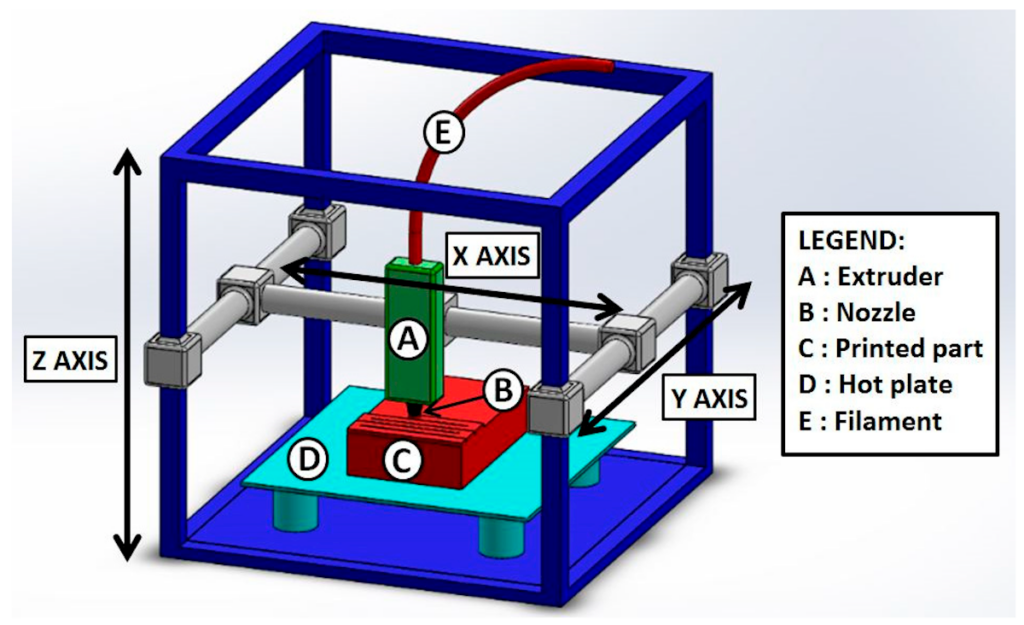As someone who has worked with 3D printers for five years now, I know that many people have little idea what it is. When I told someone, I work with 3D printers, they replied, “what kind of ink do you use?” In his defense, this sounds like a valid question if you don’t know much about 3D printing. While 3D printing machines do need a specific material to run, like regular ink jet paper printers, this is pretty much where the similarities end. 3D printing is an advanced manufacturing technology that first came to light in the 1980’s. While there are many types of 3D printing, the most popular technology is Fused Deposition Modeling (FDM). FDM uses an extremely hot nozzle like a hot glue gun to melt plastic. That plastic is then drawn out (using 3 axes, X, Y and Z) and built layer-by-layer, carefully laid on top of each other. The three axes mentioned are controlled by stepper motors that move the build tray up and down (Z direction), and the print head or extruder left to right and up and down (X and Y directions). FDM also offers the most diversity in terms of material choices ranging from ABS/ASA to Ultem (high performance plastic) and TPU (a flexible material). There is even a material, “with static dissipative properties for applications where a static charge can damage products, impair their performance or cause an explosion in a flammable environment” (link here to ABS-ESD7). Sounds confusing, but it just goes to show you how versatile this type of additive manufacturing technology is.
I like to compare 3D printing to the iPhone. When the iPhone came out, it was the first of its kind. A music player, internet browser and mobile phone all in one. You never thought you needed something like this, until you had it. Believe it or not, 3D printing for many people is a necessity. Once you realize what a 3D printer can do, you might ask yourself, “why didn’t I get this years ago!” Here are just a few examples of professional industries who utilize 3D printing in their business: architecture firms, engineering firms, schools, hospitals, long run manufacturers, prototyping firms, design shops and custom automotive shops, just to name a few. Architects can use them to build model houses. Engineering firms can make parts for their clients. Schools can use them to teach their students the future of manufacturing. Hospitals can use them to create personal protective equipment (PPE). Long run manufacturers and prototyping firms can use them to get their customers rapid parts. Design shops can make their clients idea a reality faster and easier. A car shop that does custom builds can make end use parts for vehicles it may be hard to find parts for. A great example of this is when Jay Leno needed to replace a part on his, 1922 Duesenberg Rochester. Obviously, they don’t make parts for that car anymore! They were able to take the old, rusted part off the engine, scan it and 3D print it to be used on the Duesenberg.
A great company in Rhode Island who supplies 3D printing services is R&D Technologies. R&D has done parts just like the ones listed above. They have done parts and prototypes for many companies in industries listed above and more. They can design your part and help you print it! R&D is an official partner of Stratasys and provides excellent service for all of your additive needs. Looking to purchase a printer? R&D has you covered as well! Bring your business or idea to the next level with the endless possibilities of 3D printing.
-Max Willett
Engineering Intern
R&D Technologies

